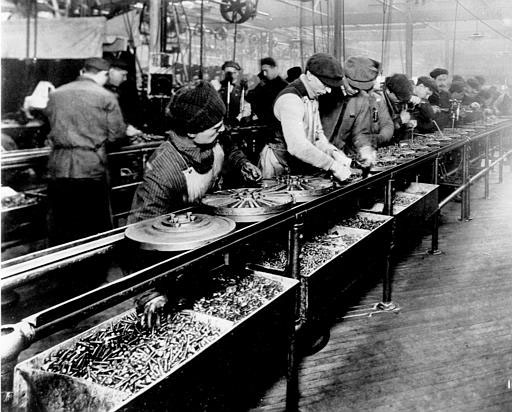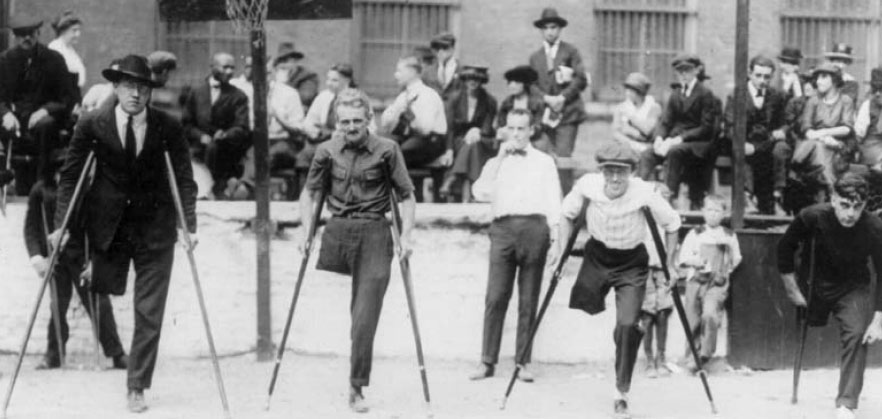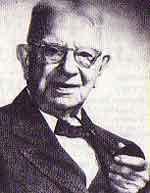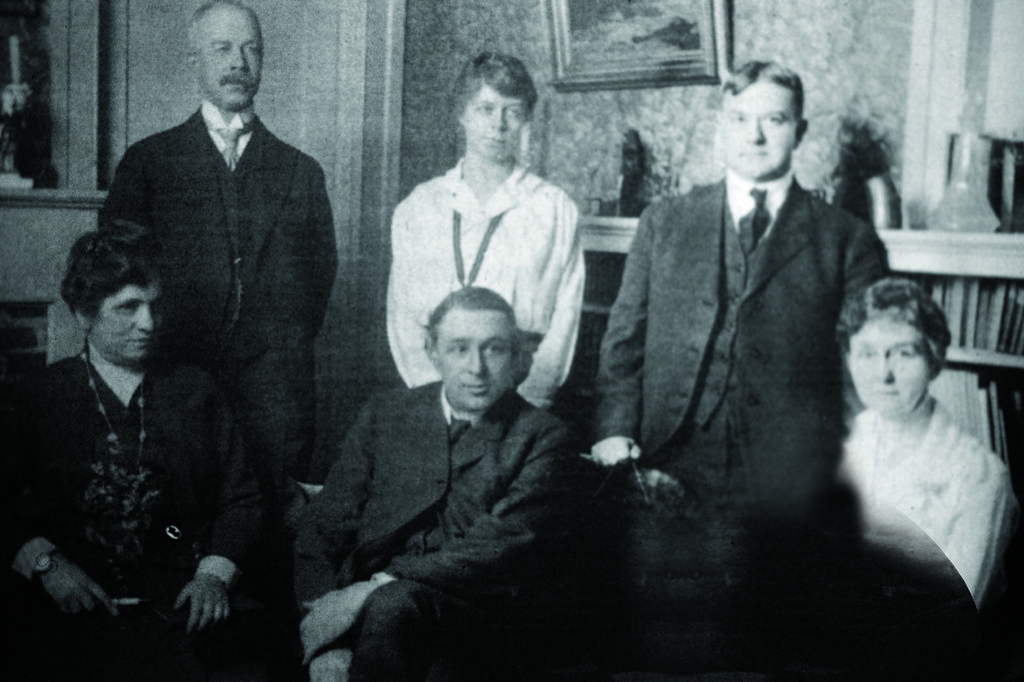I would recommend checking out
this post if you have not already read it to catch up on who the fictional character Jeremy is and why I am talking about him.
The amount of factors and influences that are affecting Jeremy are numerous to say the least. Just as any individual is affected by all the various networks within which they find themselves during their everyday life, the homeless individual is affected by factors like the housing and labor market conditions, poverty, social and racial inequality, personal vulnerabilities, and precarious life circumstances.
1 Since this is simply meant to be an example, I will only look at some of the most typically influential interactions between contextual and structural factors that are directly affecting Jeremy's occupational outcomes, meaning how Jeremy's personal attributes (contextual) are functioning within the system of his larger cultural context (structural). Hopefully through this analysis one can begin to uncover the potential for occupational injustice or apartheid as well as begin to understand the individual through his context.
The interactions we will be looking at will be the interaction between 1) Jeremy experiencing homelessness and the affordable housing availability and structures within Cincinnati, 2) his experience of homelessness while living with PTSD, and finally 3) his experience of homelessness within the cultural values and beliefs systems of the United States. It is important to note that these interactions are greatly influenced by other factors, but for the sake of clarity I will attempt to minimize the comprehensive picture I present.
Jeremy and Cincinnati
As you walk through the streets of Cincinnati, like any other modern urban center, you will encounter individuals living on the streets. Some roam city corners all day panhandling, others are simply on their way home from a day of labor, while still others do a multiple of other miscellaneous tasks throughout the city. Some huddle between the pillars of the courthouse building, ironically a building that is meant to represent justice, while others find homes under overpasses throughout the city. Some simply cover themselves with blankets, while others have built shacks and lean-tos under the cover of wooded areas. This group of individuals is described as the "chronically" homeless because its members experience homelessness on a regular and long-term basis. Of the
1,300 to 1,500 individuals who experience homelessness on any given night in Cincinnati, this population makes up around 3%,
according to the 2012 Point-in-Time report performed by Strategies to End Homelessness.
You may be surprised that Jeremy fits into such a small percentage of the homeless population, but many people are unaware that the term homeless includes individuals on the streets, in shelters, in transitional housing units, sleeping on a friends from lack of personal housing, or living in any location not originally intended for human occupation
[Source]. Often times, people who are experiencing temporary homelessness are thrown into the cycle of systemic poverty which leads them to chronic homelessness. This was Jeremy's case as well.
The two most frequent causes of temporary homelessness in Cincinnati are
lack of affordable housing and loss of income, both of which Jeremy experienced first hand. After his injury and subsequent return to the United States, Jeremy remained in the VA hospital for 6 months, receiving therapy to rehabilitate his injured leg. After 6 months, Jeremy moved into a small apartment in Price Hill due to its cheap rent and its proximity to a mechanic who had agreed to hire Jeremy to work part-time in his garage. While receiving some compensation from the military combined with the income from his part-time job, Jeremy could regularly pay his necessary bills. Over the course of a year or so, however, it became apparent that Jeremy's PTSD symptoms as well as chronic pain in his thigh and lower back were severely affecting his job performance. For example, if a tool was dropped unexpectedly by a fellow mechanic, the loud noise sent waves of anxiety and adrenaline through Jeremy causing him to need breaks often. Unlike most of the other mechanics, Jeremy needed aid lifting wheels and engine parts as well.
These factors weighed heavily on Jeremy and often caused his mental condition to deteriorate while his self-medication compounded. He felt alone and useless, unable to discern his role within the world around him. He had little social interaction outside of work and refused to see a counselor because he believed it was for "weak girly men" as well as he had no time to spare walking to talk to "a loonie shrink" instead of working. These habits began to affect his job performance even more severely, causing him to be irritable with customers and smelling of substances on the job. After two years of working in this garage, one morning, after an incident with a reckless driver on his walk to work, Jeremy was anxious, angry, and overwhelmed, so much so that he stopped at a gas station and bought a 40oz beer. He finished the bottle as he walked into the garage. Unfortunately the supervisor was forced to fire him over this incident.
Now without a job and with a severe addiction problem stemming from depression and PTSD, Jeremy could no longer afford to live in his apartment. There were no housing facilities within the area that had low-income residences. Within a month, Jeremy found himself facing his first night on the streets. Out of desperation he called a friend from work and asked to sleep on his couch until he could find a place. For another month, Jeremy slept on his friend's couch searching for work or a cheaper place to live, neither of which he found. He also consumed large amounts of alcohol and returned to his friend's home intoxicated on several occasions. After that month came to an end, his friend could no longer keep him in his house. Again, Jeremy was faced with the prospect of sleeping on the streets.

Instead, he headed to the Drop Inn Center, the only large scale homeless shelter in Cincinnati. As he walked into the building, it became very apparent that he was not going to be able to stay here. It was a crowded and hectic arena of human interaction. There was no privacy and Jeremy's anxiety was exacerbated by often unpredictable events like fights or simply antagonistic individuals. After spending four hours in the common area, he decided to face the streets.
For the first few weeks he roamed downtown Cincinnati searching for quiet hidden places to sleep. He was attacked on multiple occasions both by others experiencing homelessness and by some who were not. Finally, after a month and a half of living from alley to alley, Jeremy found a camp on the east side of Cincinnati, near the river, the camp he resides in three and half years later as you, an occupational therapist, interview him.
He states that he searched for housing for another seven or eight months after he found the camp, but soon realized there were no locations he could afford in Cincinnati. He says his only option currently would be to check into a rehab facility, which he attempted to do then, but he did not have enough public intoxication citations to qualify for the program. He also had attempted to find employment, but without a residence or a phone number he was unable to apply for many low-level positions.
Today, Jeremy has given up on trying to find affordable housing in Cincinnati or any method through which he may leave the streets. He believes, perhaps justifiably, that there is little opportunity for him, and as gentrification and displacement continue to have significant impacts in the city, his opportunity is only decreasing further. He enjoys the the quiet camp in which only he and his camp-mates reside. Although he often still has fits of anxiety and anger after newcomers attempt to set up camp near their location, it is by far more suitable for his conditions than any other place within his socioeconomic reach at this point. As you discovered before, most of his income comes from his inconsistent day labor job and panhandling. His substance abuse has largely reached terminal velocity at somewhere between functional alcoholism and constant inebriation.

As an occupational therapist, you must take into account the resources available to your clients and focus on goals that are currently possible for them. At this point, based on your understanding of city policy, programs, and resources it is not possible to help him find an affordable living situation indoors that fits his needs, wants, and obligations.
What is important to recognize about the interaction between Jeremy and his context of Cincinnati? The decreased amount of resources available to him, especially relevant to affordable housing and mental healthcare, affect his occupational performance as well as limit the intervention possibilities to you as therapist. Due to his physical location and the time and effort it takes for him to get to work, his energy level and time is significantly limited. Overall, Jeremy's situation calls for a great amount of creativity and smart goal setting to be effective within the constraints set by his context.
While in Nicaragua and Guatemala, I hope to uncover how varied availability of resources on a general scale affects occupational therapy services. Understanding extrinsic barriers like economic policy, healthcare systems, human service delivery, and government subsidies will help to paint the picture of the Nicaraguan and Guatemalan context.
1 Petrenchik, T. (2006). Homelessness: Perspectives, Misconceptions, and Considerations for Occupational Therapy. Occupational Therapy in Health Care, 20(3), 9-30.
*Photos are all locations within the city of Cincinnati

 In the early part of the 1900s, two very important changes within our world were occurring that would ultimately affect the development and formation of occupational therapy. First, the industrial revolution was in full swing, increasing factory jobs but at the same time drastically altering what "work" looked like. Assembly line factories quickly overtook the job market and countless citizens found themselves completing only a portion of the work to create a product, sometimes never actually seeing the finished product. The creativity had been removed from craftsmanship, effectively degrading the individual to a single repetitive tool in a long line of tools to create interchangeable products. The Arts and Crafts movement, present in both Europe and the United States and usually only participated in by middle- and upper-class citizens, sought to counteract this distancing of the hand from creative work by studying and continuing various craft forms. Hand-made textiles, woodworking, metalworking, basketry, weaving, and sewing all became more than simple hobbies, but methods of liberation from the "tyranny of the machine" and grasping a more "productive and meaningful" lifestyle by working in the traditional manner. They sought to maintain a moral work ethic that did not demoralize the human into the tool of the machine, but rather abide by the cultural norms that had already been deeply rooted in the Protestant Work Ethic. From this movement occupational therapists, or reconstruction aides as they were called at that time, usually middle- and upper-class, found inspiration in how to provide treatment for their patients. By providing their patients with the opportunity to successfully complete the entire process of a craft, the therapists were able to provide a moral experience of satisfaction, self-worth, accomplishment, and learning while also possibly improving other aspects of the patient's quality of life in the same moment. This flavor can still be tasted in therapy sessions today, as craftsmanship are still used to evaluate, remediate, and support participation.
In the early part of the 1900s, two very important changes within our world were occurring that would ultimately affect the development and formation of occupational therapy. First, the industrial revolution was in full swing, increasing factory jobs but at the same time drastically altering what "work" looked like. Assembly line factories quickly overtook the job market and countless citizens found themselves completing only a portion of the work to create a product, sometimes never actually seeing the finished product. The creativity had been removed from craftsmanship, effectively degrading the individual to a single repetitive tool in a long line of tools to create interchangeable products. The Arts and Crafts movement, present in both Europe and the United States and usually only participated in by middle- and upper-class citizens, sought to counteract this distancing of the hand from creative work by studying and continuing various craft forms. Hand-made textiles, woodworking, metalworking, basketry, weaving, and sewing all became more than simple hobbies, but methods of liberation from the "tyranny of the machine" and grasping a more "productive and meaningful" lifestyle by working in the traditional manner. They sought to maintain a moral work ethic that did not demoralize the human into the tool of the machine, but rather abide by the cultural norms that had already been deeply rooted in the Protestant Work Ethic. From this movement occupational therapists, or reconstruction aides as they were called at that time, usually middle- and upper-class, found inspiration in how to provide treatment for their patients. By providing their patients with the opportunity to successfully complete the entire process of a craft, the therapists were able to provide a moral experience of satisfaction, self-worth, accomplishment, and learning while also possibly improving other aspects of the patient's quality of life in the same moment. This flavor can still be tasted in therapy sessions today, as craftsmanship are still used to evaluate, remediate, and support participation.


 But Eleanor Clark Slagle was not the only one concerned with liberation and empowerment; in the early 1900s, William Rush Dunton, Jr., the "father of occupational therapy" was forming the Sheppard-Pratt Hospital, a hospital that encouraged patients to take active roles in their own care. After being influenced by William Tuke of the York Retreat, a Quaker-run home in England for those who experience mental illness, Dunton sought to incorporate a "judicious regimen of activities" into the care within his hospital. This "moral therapy" was meant to provide "habit training" for the patients, a method of replacing unhealthy habits by practicing new ones repeatedly, also allowing a more engaged participation in their own rehabilitation. At this point various institutions, mostly mental health facilities, were incorporating the idea of "occupations" into their everyday treatment by using crafts such as weaving, woodworking, metalworking, basketry, leather craft, and bookbinding. Patients were beginning to take an active role in their health and wellness instead of simply being the subject of treatments and surgeries by hospital staff. "Occupational therapy" began to be seen as a norm rather than an experiment and was largely recognized as an integral part in the betterment of patients' well-being, especially those within the mental health setting. Therapists and hospital staff were now able to provide services that surpassed mere "custodialism" and moved more towards a team effort between the doctor, nurse, therapist, and patient.
But Eleanor Clark Slagle was not the only one concerned with liberation and empowerment; in the early 1900s, William Rush Dunton, Jr., the "father of occupational therapy" was forming the Sheppard-Pratt Hospital, a hospital that encouraged patients to take active roles in their own care. After being influenced by William Tuke of the York Retreat, a Quaker-run home in England for those who experience mental illness, Dunton sought to incorporate a "judicious regimen of activities" into the care within his hospital. This "moral therapy" was meant to provide "habit training" for the patients, a method of replacing unhealthy habits by practicing new ones repeatedly, also allowing a more engaged participation in their own rehabilitation. At this point various institutions, mostly mental health facilities, were incorporating the idea of "occupations" into their everyday treatment by using crafts such as weaving, woodworking, metalworking, basketry, leather craft, and bookbinding. Patients were beginning to take an active role in their health and wellness instead of simply being the subject of treatments and surgeries by hospital staff. "Occupational therapy" began to be seen as a norm rather than an experiment and was largely recognized as an integral part in the betterment of patients' well-being, especially those within the mental health setting. Therapists and hospital staff were now able to provide services that surpassed mere "custodialism" and moved more towards a team effort between the doctor, nurse, therapist, and patient.
























